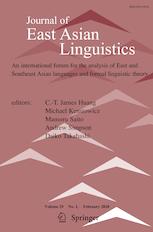The Korean VP anaphor (VPA) kuleha or kulay ‘do so’ has often been argued to involve ellipsis of an articulated VP structure, which is replaced with the surface form at PF (e.g., Cho in Lang Res 32:621–636, 1996; Ha in Korean J Linguist 35:471–487, 2010; Park in Linguist Res 32:693–718, 2015). In this paper, we present empirical data that does not support such a characterization, obtained from two experimental studies designed to diagnose the presence of “hidden” syntactic structure. In Experiment 1, building upon Kim and Han’s (in: Grosz, Patel-Grosz (eds) The impact of pronominal form on interpretation. Mouton de Gruyter, Berlin, pp 349–373, 2016) finding that quantificational binding of the Korean pronoun ku ‘he’ is subject to inter-speaker variation, we conducted a truth-value judgment task experiment to examine the (un)acceptability of sloppy identity interpretation in the VPA construction. If the VPA is indeed derived from the deletion of an articulated VP, and thus has an unpronounced internal structure to house ku, the distributions of the sloppy reading of ku and the quantificational binding of ku should be correlated across the sampled population; however, such a pattern was not found. In Experiment 2, we conducted a Likert scale rating experiment testing whether extraction out of the VPA site is possible. If the VPA is an instance of ellipsis, extraction from the VPA site should be possible since there would be a syntactic structure that hosts an extractable constituent. This prediction, however, was not confirmed. On the basis of these empirical findings, we argue that Korean VP anaphora are base-generated pro-forms (Bae and Kim in Stud Mod Gramm 70:49–71, 2012; Park in Stud Mod Gramm 72:41–66, 2013), and retrieve their semantic values from the context through interpretive rules (Hoji in Linguist Inq 29:127–152, 1998; Hoji, in: Barss (ed) Anaphora: a reference guide. Blackwell Publishing, Oxford, pp 172–236, 2003), as in the case of pronominal resolution.
Publication Type
- Article



